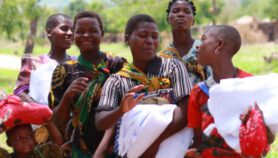Send to a friend
The details you provide on this page will not be used to send unsolicited email, and will not be sold to a 3rd party. See privacy policy.
Below is a round up of news from or about South Asia for the period 13–26 November 2008.
North-south corridors mooted to improve study of Himalayan biodiversity
Experts have proposed a new approach to studying biodiversity in the Himalayas — an area that is threatened with tremendous loss of biodiversity because of climate change, with ramifications for livelihoods and regional security. The International Conference on Mountain Biodiversity agreed to create four north-south transects to be the focus for all researchers, from individuals to global programmes. More>>
Rice paddy study pinpoints methane-releasing states
India has prepared a detailed state-by-state inventory of methane emissions from paddy fields. It finds four "hotspot" states — West Bengal, Bihar, Madhya Pradesh and Orissa — all rain-fed, flood-prone regions that account for more than half of the country’s methane emissions from paddy fields. More>>
Cyclone Nargis changes Gulf of Martaban
Images from two US satellites show that cyclone Nargis, which hit the coast of Myanmar in May 2008, increased sediments in the Gulf of Martaban area and along the mouth of the Irrawady river. The average total suspended matter in the Gulf of Martaban increased from 24 milligrams per litre before the cyclone to 31 milligrams after; while the sediment concentration along the mouth of the Irrawady nearly tripled from 12 to 34 milligrams. More>>
Northwest Atlantic Ocean ‘influences summer monsoon’
Changes in sea surface temperatures over the northwest Atlantic Ocean influence the summer monsoon rainfall over the Indian subcontinent. An analysis by Indian meteorologists shows the link between the two became strongest after the mid-70s when El Niño impact on the Indian monsoon began to lessen. More>>
Crimean-Congo haemorrhagic fever in Pakistan
Pakistan scientists have reported the first case of Crimean-Congo haemorrhagic fever from the Abbotabad district of Pakistan. The deadly viral disease is endemic to some parts of the country. More>>
Add iron, iodine to pinch of salt
Adding both iron and iodine to dietary salt can help reduce the incidence of anaemia and iodine deficiency disorders in one go. A study by Indian and Swiss researchers shows the dual fortification strategy works very well in primary school children. More>>
DNA vaccine for brain fever ‘successful’ in monkeys
A candidate DNA vaccine against Japanese encephalitis (JE), the mosquito-transmitted virus that causes the fatal brain fever in children, has shown promise in tests in monkeys. The vaccine generates protective levels of antibodies to the virus and primes the immune system sufficiently against subsequent exposures. More>>
Video boost for maths and science training
A programme called Blended Learning Open Source Science or Math Studies (BLOSSOMS), a joint initiative of Jordan, Pakistan and the Massachusetts Institute of Technology (MIT) in the United States kicked off this month (November). The programme aims to develop a large free repository of science and maths interactive video modules. More>>
IBM, Moratuwa University team up in information technology
IBM’s country office in Sri Lanka will team up with the University of Moratuwa to foster information technology skills in students. IBM also plans to foster innovation and technology collaboration in the country. More>>
Compiled by T. V. Padma. Additional reporting by Sanjit Bagchi.
If you would like to suggest a story for this news in brief, please contact the South Asia Regional Coordinator T. V. Padma ([email protected]).













